From forested canyons to cliffside dinners, baroque cathedrals to sunlit beaches—this is five days in Puglia, where every road led to a new kind of beauty.
You’ll hike through the Umbra Forest, sip wine in Locorotondo, swim beneath Gallipoli’s city walls, and watch sunsets from whitewashed rooftops.
Let’s explore Italy’s wildest, most unforgettable corner.
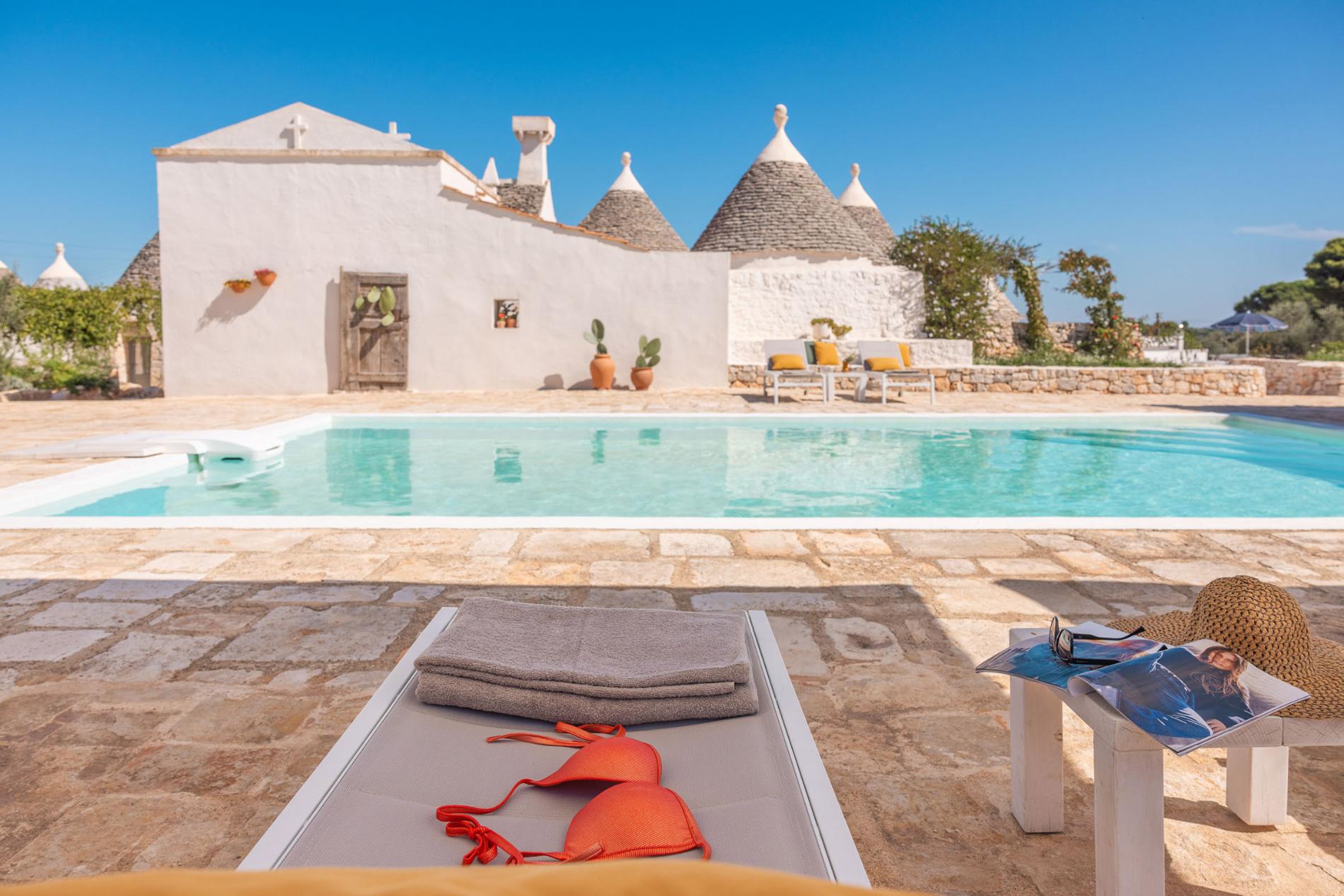
Best Time to Visit
The best time to explore Puglia is between May and mid-June or September to early October. You’ll get warm, sunny weather—around 75–82°F (24–28°C)—without the summer crowds or peak prices. July and August bring intense heat, packed beaches, and higher rates, especially along the coast. In winter, some smaller towns go quiet, and hours at key sights may be reduced. For the best mix of sunshine, seafood, and stress-free travel, go shoulder season.
Airport Tips
Puglia is served by two main international airports: Bari (BRI) and Brindisi (BDS). Bari has more international connections and typically offers better car rental availability, while Brindisi is convenient if you’re coming from elsewhere in Italy. For domestic travellers, Foggia Gino Lisa Airport (FOG) is a smaller regional option with limited flights, but useful if you’re already within the country. All three airports are compact and easy to navigate, with taxis to nearby city centres ranging from 25–35 USD, or budget-friendly shuttles starting around 2 USD.
Where to Stay
Puglia offers a mix of coastal stays, countryside Masserie, and old town B&Bs. In Vieste, Polignano a Mare, and Gallipoli, you’ll find sea-view guesthouses from 100 to 200 USD. Inland towns like Ostuni and Locorotondo offer boutique hotels and farm-style retreats, often around 130 to 180 USD. For something more refined—think historic villas or palazzos—luxury options start at 200+ USD across most regions.
How to Get Around
To explore most of Puglia, renting a car is essential. Many of the region’s best spots, like the Umbra Forest, hilltop towns, and rural wine roads, aren’t easily reached by public transport. Trains connect larger cities like Bari, Lecce, and Brindisi, and buses serve some smaller towns, but routes are limited and often slow. For full flexibility and access to Puglia’s hidden corners, a car is your best option.
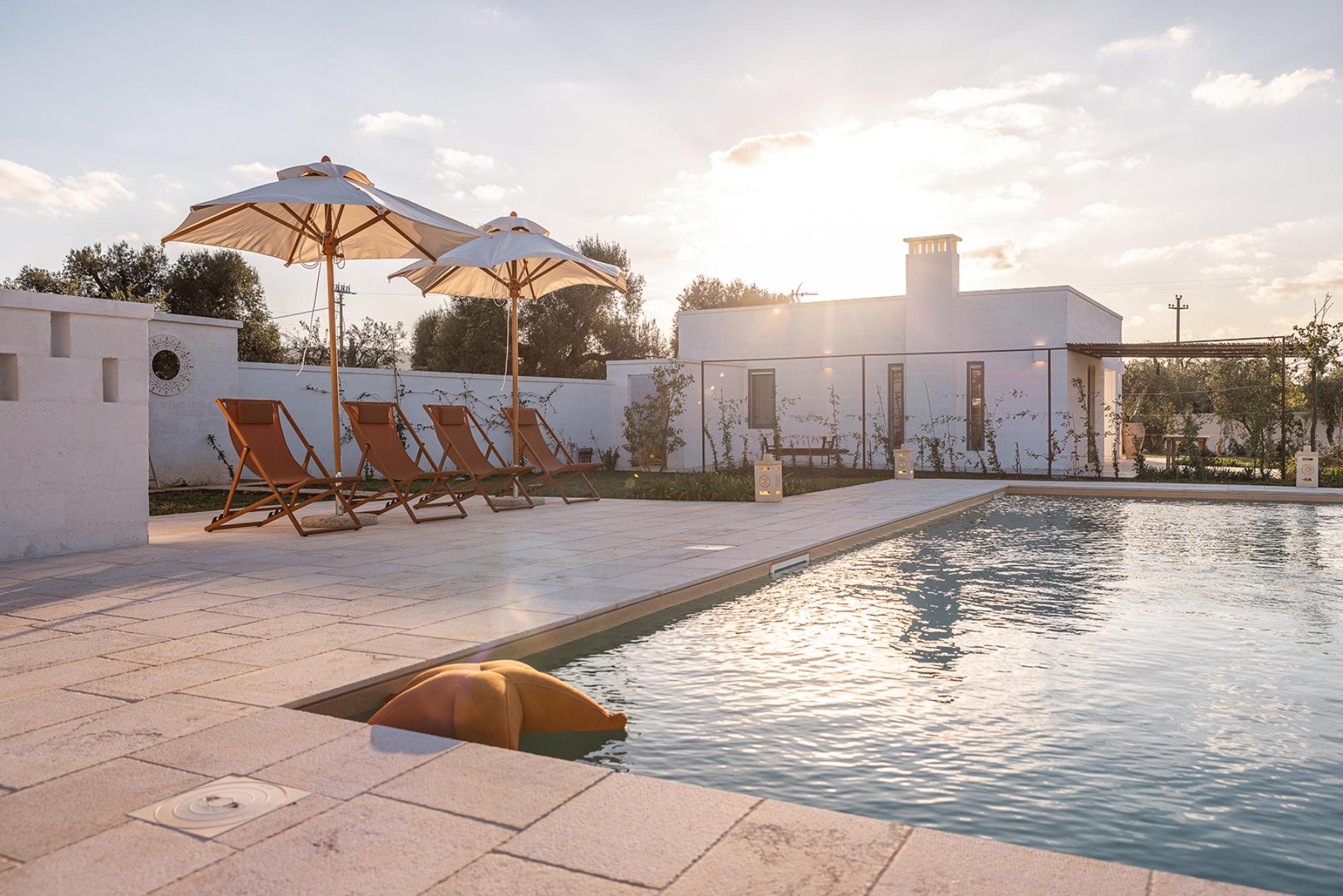
Day 1: Gargano Peninsula Wonders
Morning: Explore the Umbra Forest Begin your first day in the cool, shadowed stillness of the Umbra Forest, one of the most ancient and biodiverse woodlands in southern Italy. Set within Gargano National Park, this UNESCO-recognized beechwood spans over 25,000 acres and shelters more than 2,000 plant species, along with deer, wild boar, foxes, and hundreds of bird species. The forest takes its name from the Latin word umbra, meaning shade, and here, light trickles in through towering beech trees like filtered gold. There are over 15 marked trails, ranging from gentle loops to longer half-day hikes, each offering a different view of this living, breathing ecosystem. Start at the Laghetto d’Umbra trailhead, where you’ll find an artificial lake and signs for several scenic walks. A highlight for nature lovers is Trail No. 5, an easy, scenic loop that passes through dense tree cover and past a wildlife observation area. Insider Tip: Bring binoculars if you can. Umbra is part of a protected bird migration route, and spring or autumn mornings often bring sightings of hawks, woodpeckers, and even owls hiding in the canopy. Breakfast – Trattoria Foresta Umbra Just a short walk from the trailhead, this rustic trattoria is a local favorited for hikers and forest workers alike. Expect a simple but satisfying selection, espresso and cornetti in the early morning, or orecchiette, wild mushroom pasta, and local meats by lunch. Prices are modest, around 8–12 USD per plate, and the wooden tables outside make it a peaceful place to start your day under the trees. Discover Vieste Old Town and climb the Basilica Bell Tower From forest to coast, the road leads you into Vieste, one of the most picturesque towns on the Gargano Peninsula. Perched on a white limestone bluff overlooking the Adriatic, Vieste’s old town is a tangle of narrow alleys, sun-washed staircases, and balconies overflowing with geraniums. Lose yourself in the charm of its medieval lanes, where laundry flutters overhead and each turn opens onto sea views or secret courtyards. At the heart of the old town, you’ll find the Basilica Cattedrale di Santa Maria Assunta, with its creamy stone facade and 11th-century origins. Step inside to admire its Romanesque interior, then climb the Baroque bell tower for a sweeping panorama across Vieste’s rooftops and the shimmering coastline beyond. It’s a short ascent, but the view makes it one of the most photogenic spots in town. Access can vary seasonally, so check opening hours locally before visiting. Insider Tip: The bell tower is especially striking in the morning light. Climb before noon to catch the Adriatic glowing silver-blue behind the terracotta rooftops.
Late-Morning: Climb the romantic Staircase of Love (Scalinata dell’amore) Just a few minutes’ walk from the basilica, tucked between whitewashed buildings, you’ll come upon one of Vieste’s most beloved little surprises: the Staircase of Love, or Scalinata dell’amore. Each step is painted with lines of poetry, handwritten declarations, and love notes from all over the world, part street art, part community confession wall. Couples stop here for photos, but even solo travellers find themselves smiling at the mix of heartfelt and humorous verses. It’s not a grand monument, it’s a quiet, unexpected moment in the middle of town that captures the spirit of Vieste: romantic, personal, and proudly local. Walk the scenic Vieste Promenade From the old town, follow the coastline to the Vieste Promenade, where limestone cliffs rise above the Adriatic and salt air sweeps in with the breeze. The path curves gently past pastel houses and palm-lined edges, leading toward Punta San Francesco, a rocky outcrop crowned by a centuries-old monastery. The views here stretch far beyond the cape, turquoise waters below, fishing boats on the horizon, and the slow rhythm of Vieste life all around you. It’s a quiet, open space perfect for a reflective walk or a few unhurried moments by the sea. Lunch – Al Trabucco Da Mimì After a short drive from Vieste, head to this dramatic cliffside restaurant just outside Peschici. Built on a historic fishing platform above the sea, it’s known for spaghetti with clams and sea asparagus, grilled seabass, and raw seafood platters. Desserts like semifreddo start at 6 USD. A full lunch with wine runs around 40–60 USD per person.
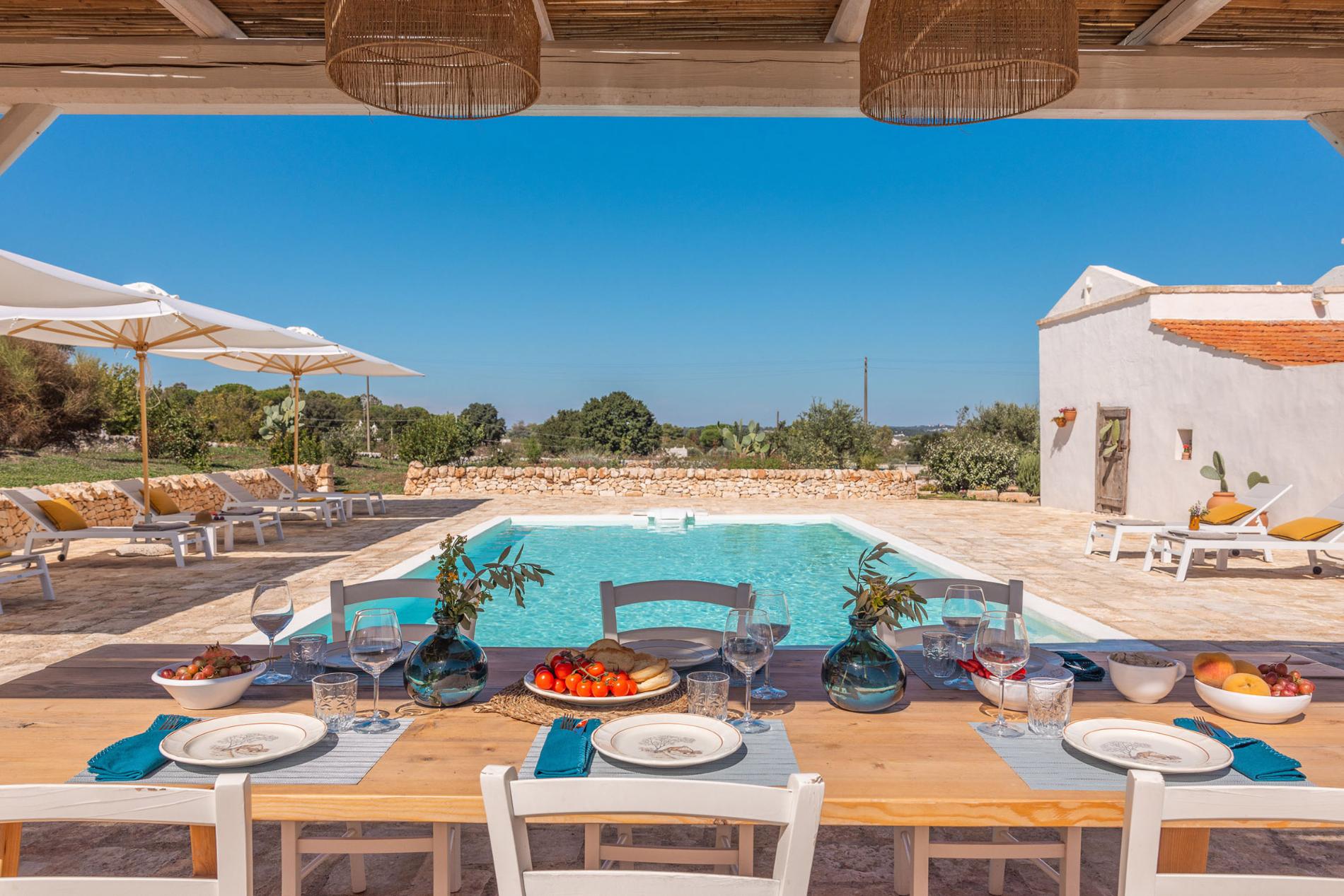
Afternoon: Peschici Old Town and the historic Castello After lunch, take the short drive into Peschici’s old town, where sunlit alleyways and whitewashed walls create one of the most photogenic stops along the coast. Wander through the tight maze of streets, lined with artisan shops and hidden staircases, then head uphill to the Castello di Peschici. This medieval fortress once guarded the coastline and now offers sweeping views across the rooftops and out to sea – an ideal spot to pause and take in the rhythm of the Gargano. Torre di Monte Pucci from the town centre, it’s a quick drive to the edge of the coast where the Torre di Monte Pucci stands alone against the sea. One of many ancient watchtowers scattered along the Gargano Peninsula, it once warned villagers of incoming attacks.
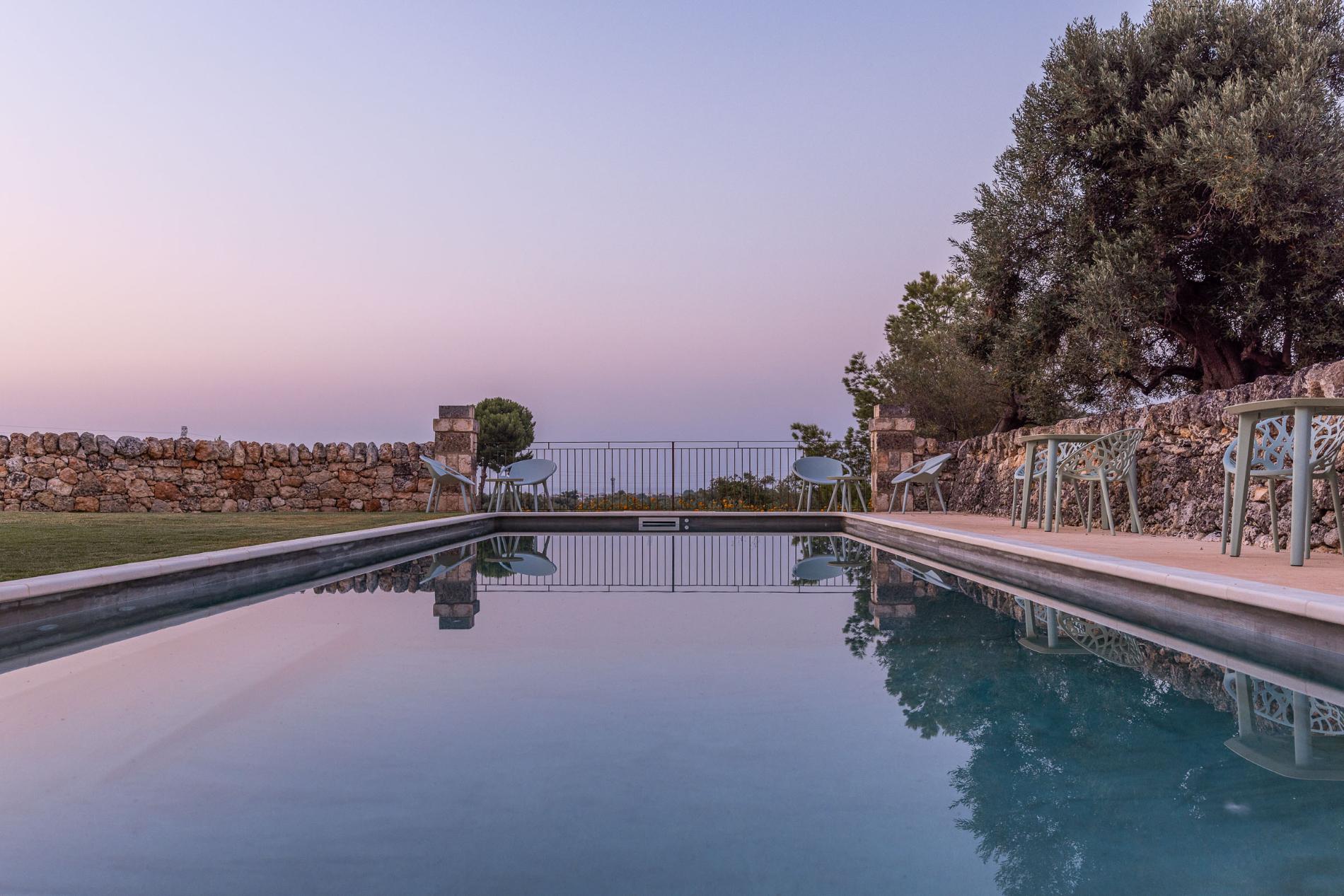
Today, it offers nothing but silence, sea breeze, and one of the rawest coastal views of the day. There’s not much to explore here- just a weathered stone tower, open sky, and the feeling of standing at the edge of the world. Late-Afternoon: Corso Giannone in Rodi Garganico Continue your journey with a short drive north to Rodi Garganico, a small coastal town known for its quiet charm and citrus groves. Start with a stroll along Corso Giannone, the town’s main street lined with shops, cafés, and balconies overlooking the sea. It’s the kind of place where locals greet each other by name, and visitors slow down without even realizing it. Grab a gelato, browse a few boutiques, and take in the relaxed rhythm of this lesser-known gem. Lido del Sole Just outside the town centre, Lido del Sole offers a quiet stretch of coast perfect for a late-day pause. This Blue Flag beach is known for its clean water, soft sand, and relaxed, family-friendly vibe. Whether you take a dip or just stretch out in the sun, it’s an easy place to recharge before the evening begins. Beach clubs line the shore, but there’s plenty of space for a towel and a moment of calm.
Piazza Rovelli End the afternoon with a peaceful stop at Piazza Rovelli, the heart of Rodi Garganico. Perched on a hill above the port, the square is small but full of character, colourful facades, a few benches, and views that open wide over the sea. As the sun dips low, locals gather here for an evening chat, and the whole town seems to slow to match the light. It’s a quiet, unassuming spot, and the perfect place to let the day settle in. Evening: Dinner at L’Angolo della Pizza For a relaxed end to the day, grab a table at L’Angolo della Pizza, a no-frills local favourite in Rodi Garganico. Their wood-fired pizzas come out hot and crisp, topped with regional ingredients like wild greens, local sausage, or simple tomato and mozzarella. Expect to spend around 10–15 USD per person, and don’t be surprised if locals are lined up out front; that’s how you know it’s the right place.
Day 2: Sacred Stones and Seaside Charms Morning: Breakfast at Caffè Byron Start your second day with a drive up into the mountains, where white stone houses cling to the hillside and the air turns crisp and cool. You’ve arrived in Monte Sant’Angelo, one of Puglia’s most sacred towns, and the highest point on the Gargano Peninsula. Before diving into its ancient history, ease into the morning at Caffè Byron, a quiet café just steps from the sanctuary. Grab an espresso and a fresh cornetto, and take in the breeze from the terrace overlooking the valley. It’s a peaceful start, just coffee, mountain light, and the sound of church bells in the distance. Expect to spend around 5–7 USD for a simple breakfast. Sanctuary of Saint Michael the Archangel At the heart of Monte Sant’Angelo lies one of the oldest and most revered pilgrimage sites in all of Europe—the Sanctuary of Saint Michael the Archangel. Built into the rock and descending deep into the earth, this sacred grotto has drawn pilgrims since the 5th century. Step through its arched stone entry and into the cool silence of the cave, where flickering candles line the walls and centuries of devotion echo from every surface. Declared a UNESCO World Heritage Site, the sanctuary is still active today, with masses held regularly and visitors arriving from around the world.
Entrance is free, and no matter your beliefs, the atmosphere inside—solemn, timeless, and carved directly into stone—is unforgettable. Late-Morning: Monte Sant’Angelo’s historic centre After visiting the sanctuary, take time to explore the winding lanes of Monte Sant’Angelo’s historic centre. With its steep alleys, whitewashed houses, and balconies draped in laundry, the town feels untouched by time. Follow cobbled paths past tiny chapels and artisan workshops, pausing at panoramic viewpoints that open out over the Gargano landscape and the Adriatic in the distance. It’s a quiet place where every corner feels lived-in, and every stone tells a story. Castel del Monte From Monte Sant’Angelo, make your way inland to one of Puglia’s most iconic landmarks: Castel del Monte. Rising from the hills of the Alta Murgia National Park, this perfectly symmetrical, octagonal fortress was built by Emperor Frederick II in the 13th century, and its precise geometry still baffles historians today. Wander through its stone corridors and central courtyard, where arches and shadows create patterns as striking as the castle itself. Though sparsely furnished, the structure is rich in mystery, with legends hinting at hidden meanings and astronomical alignments.
Entrance costs around 10 USD, and a guided tour adds helpful context to one of the most unique medieval sites in Italy. Lunch in Trani Continue your journey south with a drive to Trani, a coastal town known for its limestone harbor and elegant energy. Stop for lunch at Mandolino, a bright and modern spot offering a fresh take on local traditions. Go for the cavatelli with shrimp and pistachio pesto or the grilled octopus with potato cream—both beautifully balanced and packed with flavour. Expect to spend around 20–30 USD per person with wine. It’s a stylish yet relaxed place to pause before exploring the town. Cathedral of Trani Set right at the water’s edge, the Cathedral of Trani is one of the most striking churches in southern Italy. Built from pale local limestone, it rises like a sculpture between sea and sky, its Romanesque arches glowing pink in the afternoon light. Step inside to see the underground crypts and ancient mosaics, then walk around the back for a sweeping view of the Adriatic. Entrance is free, and the setting alone makes this one of the most memorable stops of the day. Villa Comunale Just a few steps from the cathedral, the Villa Comunale offers a peaceful change of pace.
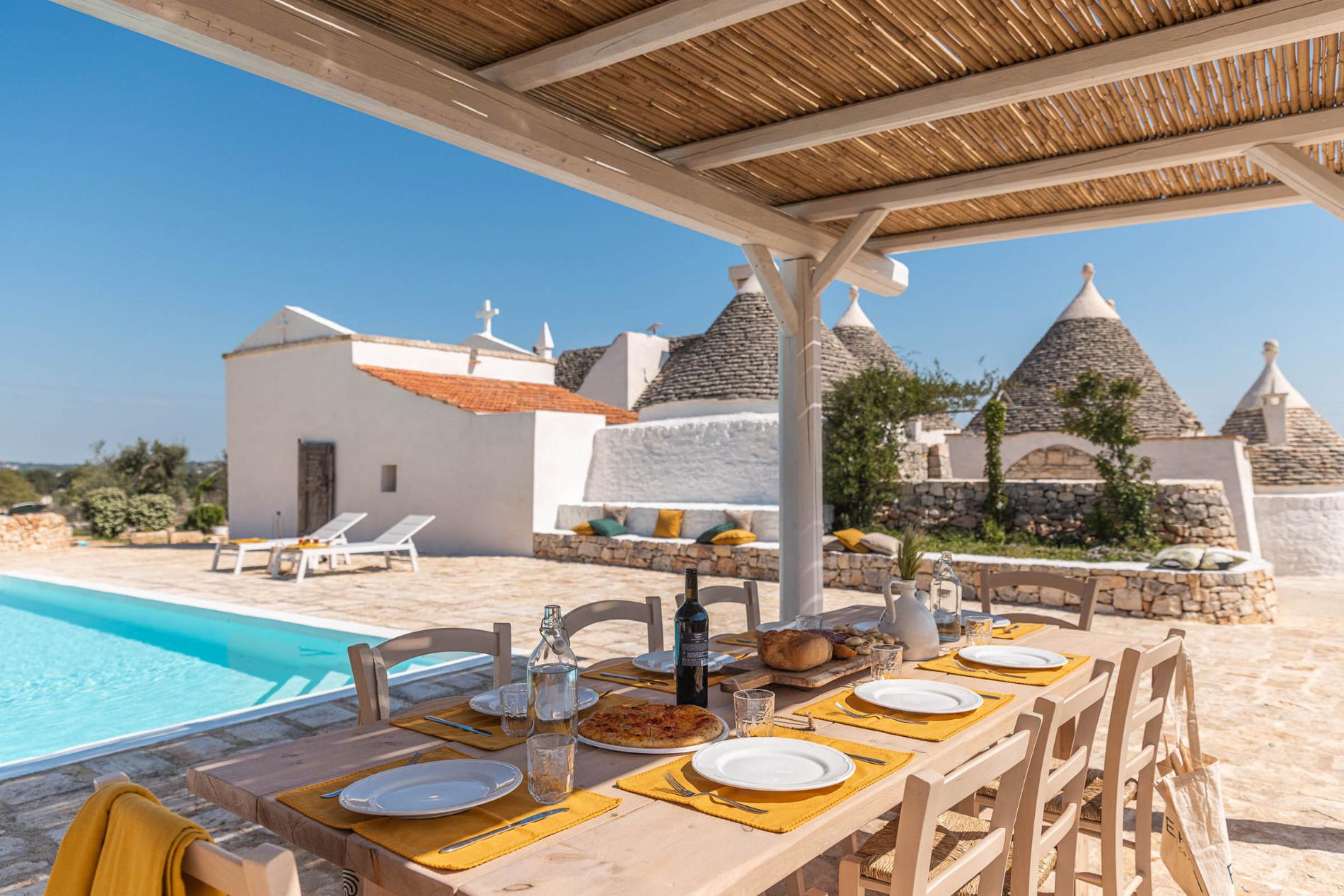
This coastal garden promenade is shaded by palm trees and lined with fountains, benches, and sea views between the hedges. Locals come here to stroll, read, or catch the breeze off the water. It’s the perfect spot to slow down for a few moments and take in Trani’s elegant rhythm. Lido Bella Venezia Wrap up your afternoon with a bit of sun and sea at Lido Bella Venezia, a popular beach just beyond Trani’s centre. The water here is calm and clear, ideal for a quick swim or a stretch of downtime on the sand. You’ll find loungers, changing areas, and a casual beach bar nearby—everything you need to relax before evening sets in. Evening: Dinner at Le Lampare al Fortino for your second night in Puglia, dine at Le Lampare al Fortino, a refined restaurant set inside a restored monastery tower overlooking Trani’s harbor. The setting is romantic and dramatic, with arched stone ceilings and candlelit terraces facing the sea. Try the risotto with red prawns and citrus, or the slow-cooked lamb with rosemary and fig sauce. With wine and dessert, expect to spend around 60–80 USD per person—a memorable splurge to match the setting.
Day 3: Underground Wonders and Cliffside Charm Morning: Breakfast at Bakery Santa Rita (Bari Vecchia) Begin your third day in the heart of Bari Vecchia, where narrow alleys hum with early-morning life and the scent of fresh focaccia fills the air. Stop at Bakery Santa Rita, a tiny corner spot loved by locals, for a slice of focaccia barese—warm, oily, and studded with cherry tomatoes—and a strong espresso to match. It’s a quick, flavourful start to the day, and you’ll rarely spend more than 5–7 USD for both. Bari Vecchia After breakfast, dive into the maze-like charm of Bari Vecchia, the city’s old town, where history, faith, and everyday life intertwine. Wander through sunlit lanes where grandmothers roll orecchiette by hand outside their doorways, and laundry flutters between crumbling stone walls. Pause at Piazza Mercantile and Piazza del Ferrarese, two lively squares at the edge of the sea, before stepping into the serene Bari Cathedral and the ornate Basilica San Nicola, a pilgrimage site for both Catholics and Orthodox Christians. It’s a place where centuries of devotion and local life live side by side. Late-Morning: Castellana Caves Leave the coast behind and head inland to the Castellana Caves, one of Italy’s most impressive underground wonders. Formed over 90 million years ago, this vast karst system plunges 230 feet beneath the surface, revealing a surreal world of stalactites, stalagmites, and fossil-lined chambers. Guided tours take you through a network of limestone halls, including the dazzling White Cave, known for its brilliant crystal formations.
Entry is around 20 USD for the full tour, which lasts about 90 minutes. Wear sturdy shoes—the ground can be slick, and the temperature drops as you descend. Alberobello from the caves, continue south to Alberobello, the storybook town famous for its whitewashed trulli—cone-roofed stone houses that look like they’ve been plucked from a fairy-tale. Walk through the charming Rione Monti district, where hundreds of trulli line narrow lanes, then step inside the two-story Trullo Sovrano to see how people once lived inside these unique structures. Don’t miss the Church of Saint Anthony, the only church in the world built entirely in trullo style. It’s one of Puglia’s most iconic stops—and one of its most photogenic. Afternoon: Lunch – Principotto. For a casual lunch in the heart of Alberobello, head to Principotto, a small eatery tucked inside a traditional trullo.
They serve up fresh local street food—try the panzerotto with mozzarella and tomato, or the orecchiette with turnip greens and anchovy oil. It’s quick, affordable, and packed with Puglian flavor. Expect to spend around 12–18 USD per person for a satisfying, no-frills meal. Polignano a Mare After lunch, make your way to the coast and arrive in Polignano a Mare, one of Puglia’s most iconic seaside towns. Begin at Belvedere su Lama Monachile, where the cliffs open dramatically to reveal a narrow cove framed by ancient stone bridges and turquoise water below. From there, wander the sun-bleached alleys of the old town, where poems are scrawled on white walls, and hidden balconies offer sudden views of the sea. It’s a place made for slow steps and quick photos. Late Afternoon: Punto Panoramico Largo Ardito & Pietra Piatta. As the light softens, head toward Punto Panoramico Largo Ardito and the nearby Pietra Piatta viewpoint. Both offer sweeping views of the cliffs, sea caves, and the horizon beyond—perfect spots to pause and take in the dramatic beauty of Colignan’s coastline. Whether you’re capturing the moment on camera or just standing still in the wind, this is where the town feels its most cinematic.
Evening: Dinner in Polignano a Mare For your evening meal, choose between two standout spots in the heart of Polignano. At Ristorante Antiche Mura, enjoy refined seafood dishes like baked sea bream with cherry tomatoes or homemade pasta with red prawns, served in a romantic indoor-outdoor setting. A full dinner with wine runs around 50–70 USD per person. Prefer something more casual? Head to Ristorante Pescaria, a local favourite known for its tuna tartare sandwiches, octopus bowls, and fast, fresh seafood with a modern twist. Meals here range from 15–25 USD, making it a laid-back but flavor-packed way to end the day.
Day 4: Hilltop Towns, Wine Roads, and Olive Roots Morning: Breakfast at Caffè Letterario (Monopoli) Start your fourth day with a quiet pause in the town of Monopoli, just before the landscape opens into the hills of Valle d’Itria. At Caffè Letterario, grab a warm pastry and a strong espresso in a relaxed setting filled with books, locals, and the scent of fresh cornetti. Whether you sit down to savor or take it to go, it’s a perfect launch into the countryside. Expect to spend around 5–7 USD for a light, classic Italian breakfast. Locorotondo After breakfast, head inland to the hilltop town of Locorotondo, known for its perfectly circular old town and blindingly white cummerse—tall, narrow homes with pointed roofs. Stroll the cobbled lanes as potted geraniums spill from balconies and laundry flutters between archways. The town is quiet, compact, and beautifully preserved. From the upper terraces, the views stretch across rolling vineyards, olive groves, and the trulli-dotted countryside of Valle d’Itria—some of the most iconic landscapes in all of Puglia.
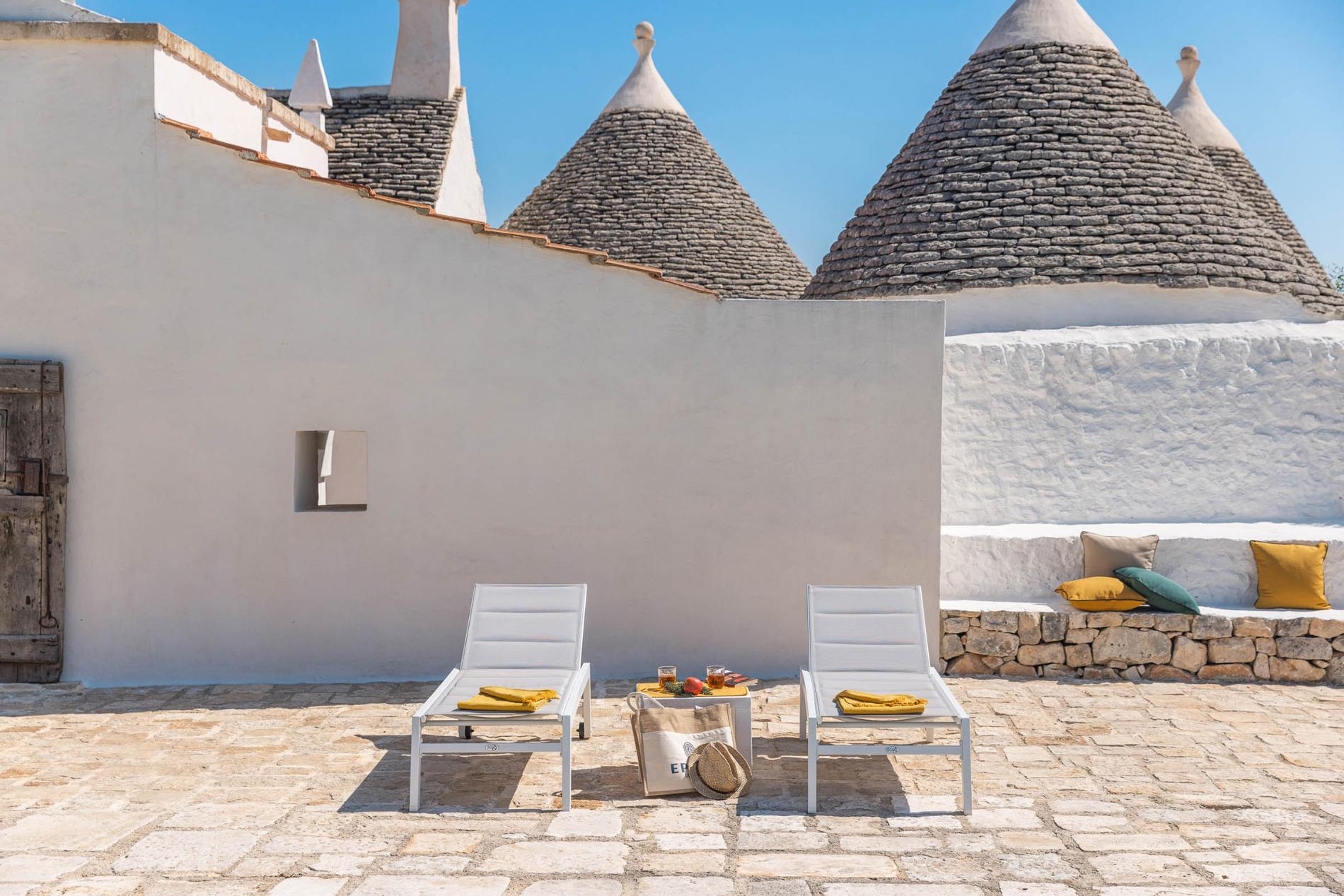
Cantina Mir – Vineyard Tour and Tasting Just outside the town walls, step into the vines at Cantina Mir, a family-run winery that has been producing local varietals for generations. The tour begins with a walk through the vineyard and a look inside their 19th-century micro-cellar, followed by a guided tasting of Verdeca, rosé, and amphora-aged red wines, each paired with local bites like taralli, cheese, and focaccia. The setting is relaxed and personal—no buses, no crowds, just good wine and genuine southern hospitality. Tours typically cost around 35–45 USD per person and last about 90 minutes. Late-Morning: Church of Saint George, Chiesa di San Nicola, and Madonna della Greca Back in the heart of Locorotondo, take a moment to visit three of the town’s historic churches—each small, distinct, and deeply tied to local tradition. The Church of Saint George, with its neoclassical facade, anchors the old town. Just a few steps away, the Chiesa di San Nicola offers a more intimate, Baroque interior. And tucked at the edge of town, Madonna della Greca is the oldest, with 12th-century origins and a serene simplicity that contrasts beautifully with the winding streets just outside. Lunch in Locorotondo Lunch in Locorotondo comes with a view and serious flavor. At U Curdunn, grab a table on the terrace or in the vaulted stone dining room and dig into rustic dishes like strascinati with sausage and mushrooms or grilled pork with herbs.
Prefer something a bit more refined? Bina Ristorante di Puglia serves elegant takes on local classics—think burrata with anchovy oil or ricotta-lemon ravioli with almonds. Expect to spend 20–35 USD per person with wine at either spot. Afternoon: Terrazzamenti Via Nardelli and Punto Panoramic Before leaving Locorotondo, stop at the town’s most scenic overlooks, Terrazzamenti Via Nardelli and Punto Panoramico. These elevated terraces open up to sweeping views of the Valle d’Itria below: rows of vineyards, ancient olive trees, and clusters of trulli scattered across the rolling hills. It’s one of the best places in Puglia to take in the full scale and beauty of the countryside in a single frame. Bring your camera—or just pause and let the view settle in. Ostuni Leaving Locorotondo, head to the dazzling white city of Ostuni, perched high above the olive groves and coastline. Wander through its winding lanes where every wall seems to glow in the afternoon light. Step inside the Ostuni Cathedral, with its unique rose window carved in stone, then pass beneath the Arco Scoppa, a soaring archway that links two noble palaces.
As you continue through the old town, pause at Porta Azzurra, a tucked-away blue door framed by vines—one of the most photographed spots in the city. Early-Evening: Ape Tour of the Millenary Olive Groves from Ostuni’s hilltop, descend into the countryside for a guided Ape Calessino tour through the ancient olive groves that stretch toward the sea. These gnarled trees—some over 2,000 years old—are a living link to the region’s agricultural past. Riding in a three-wheeled tuk-tuk, you’ll wind through quiet farm roads, stopping at viewpoints and ending with a tasting of locally pressed extra virgin olive oil at a traditional masseria. Tours last about 60–90 minutes and cost around 35–45 USD per person. It’s relaxed, scenic, and rooted in real Puglian tradition. Evening: Dinner in Ostuni for your final stop of the day, dine in one of Ostuni’s most atmospheric settings. At Taverna della Gelosia, settle into a quiet garden terrace surrounded by stone walls and flickering lanterns. The menu highlights dishes like tagliolini with truffle or braised lamb with herbs, with dinner costing around 35–50 USD per person. Prefer something with historic flair? Osteria del Tempo Perso is set inside a limestone cave and serves rustic, traditional fare like slow-cooked meats, handmade pastas, and hearty Puglian starters. Expect to spend 40–60 USD per person, and don’t forget to try their local house wine.

DAY 5: Southern Salento Morning: Breakfast at Continental in Brindisi Your final day begins with a drive south from Ostuni to the breezy port town of Brindisi, where the Adriatic laps gently against marble walkways and quiet harbors. Pull up along Lungomare Regina Margherita, and ease into the morning with a stop at Continental—a local café just steps from the water. Order a cappuccino and fresh cornetto, then take a seat outside as ferries glide past and the palm-lined promenade slowly wakes up. It’s a light, no-fuss breakfast—about 6–8 USD per person—but the setting feels cinematic. Calm, coastal, and effortlessly southern.
Lungomare Regina Margherita After breakfast, take a short walk along Lungomare Regina Margherita, Brindisi’s elegant waterfront promenade. Lined with palm trees and historic buildings, it stretches along the harbor where sailboats rock gently and fishermen prep their lines. The pace is slow, and locals sip coffee on benches facing the sea. As you walk, you’ll spot ancient columns, quiet piers, and the blend of old-world charm with working-port energy. It’s a peaceful way to take in Brindisi’s rhythm—half coastal retreat, half maritime gateway. Colonna Romana At the southern end of the promenade, you’ll reach the Colonna Romana—a single, towering Roman column that once marked the end of the Via Appia, the ancient road connecting Rome to the Adriatic. Though its twin was toppled centuries ago, the surviving column still rises proudly over a grand staircase, framed by sea views and echoes of antiquity. It’s a quick stop, but a powerful one—a place where you can literally stand at the end of the Roman road.
Late-Morning: Piazza del Duomo (Lecce) From Brindisi, continue inland to the baroque jewel of Lecce, where the streets glow with pale stone and centuries of artistry. Begin your visit in the elegant Piazza del Duomo, one of the most beautiful squares in southern Italy. Unlike most bustling piazzas, this one feels enclosed and serene—more like a theatrical set than a city centre. Framed by the Lecce Cathedral, its bell tower, the Bishop’s Palace, and the Seminary, the square blends solemn grandeur with graceful design. It’s a place to stand still, take a breath, and soak in the baroque drama. Basilica di Santa Croce Just a short walk from the piazza, the Basilica di Santa Croce is Lecce’s most iconic baroque masterpiece. Its facade is a whirlwind of carved cherubs, twisted columns, and fantastical creatures—all sculpted from the city’s warm, golden stone. Step inside to find a cooler, quieter space, where the ornate ceiling and side chapels continue the visual drama. It’s theatrical, unapologetically detailed, and unique to Lecce’s flamboyant architectural style.
Roman Amphitheatre Tucked unexpectedly into one of Lecce’s busiest squares, the Roman Amphitheatre feels like a sudden break in time. Partially excavated and framed by baroque palaces, this 2nd-century structure once held over 25,000 spectators for gladiator games and public events. Today, its arches and stairways are still visible beneath street level—quietly anchoring the city’s ancient past beneath its baroque present. It’s a quick visit, but one that connects Lecce to the Roman world in a single glance. Lunch at La Strada Del Vino Wine Bistrot Break for lunch at La Strada Del Vino, a modern wine bistro tucked into one of Lecce’s quieter side streets. The atmosphere is relaxed but polished—think stone walls, chalkboard menus, and shelves lined with local vintages. Try the baked burrata with seasonal vegetables, or go for a classic orecchiette with turnip tops and anchovy oil. Pair it with a glass of Salice Salentino or a crisp local rosé.
A full lunch here averages around 25–35 USD per person with wine. Afternoon: Gallipoli Old Town Leave Lecce behind and head west to the Ionian Sea, where the island’s old town of Gallipoli waits behind stone walls and sea breezes. Cross the short bridge that links the mainland to this historic fishing village and step into a world of narrow lanes, weathered facades, and slow coastal rhythm. The town’s name means “beautiful city”—and as you wander through its sun-bleached streets with the sea on all sides, you’ll understand why. Gallipoli Cathedral At the heart of the old town stands the Cathedral of Sant’Agata, a baroque gem that rises unexpectedly from the winding alleys. Its richly sculpted façade is packed with saints, swirls, and angels carved from golden stone. Step inside to find bold frescoes, intricate side chapels, and a dramatic central nave bathed in filtered light. It’s an unexpectedly grand centrepiece for such a laid-back seaside town—and a quiet moment of splendour in the coastal afternoon.
Gallipoli Castle Just steps from the old harbor, Gallipoli Castle anchors the eastern edge of the island like a stone sentinel. Originally built in the Byzantine era and expanded by the Angevins and Aragonese, its thick towers and sea-facing ramparts offer a striking contrast to the delicate baroque churches nearby. While much of the interior is only partially accessible, exhibitions inside often showcase local history and maritime traditions. Entry costs about 5 USD, and even just walking its perimeter offers a powerful sense of Gallipoli’s fortified past.
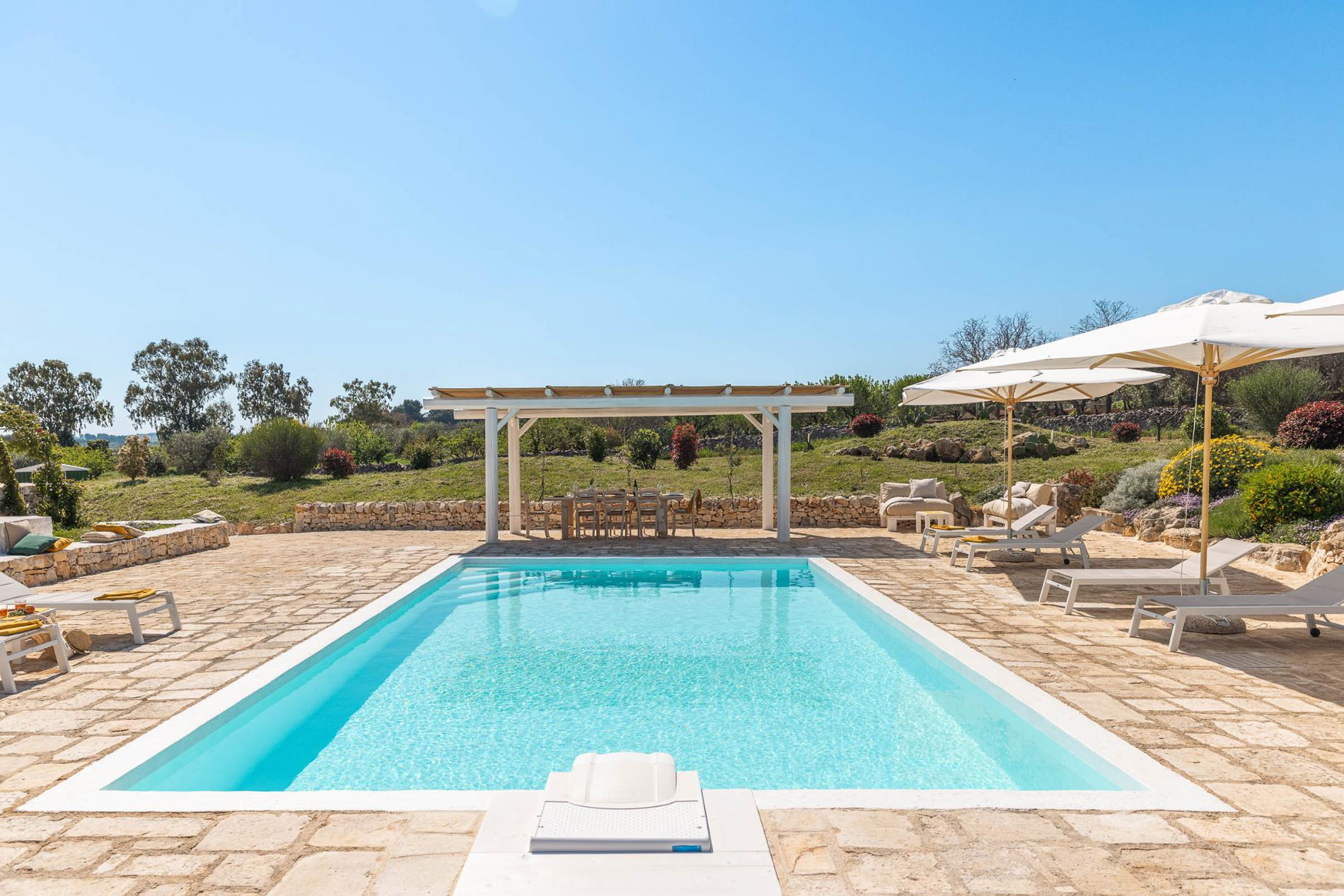
Late- Afternoon: Purity Beach As the afternoon winds down, make your way to Purity Beach—a narrow, golden strip tucked beneath the old town walls. With its calm, clear waters and a view of whitewashed buildings rising above the sand, it’s one of Gallipoli’s most photogenic spots. Locals come here for a quick swim, to sunbathe, or just to sit and watch the fishing boats drift by. Whether you dip your feet or just pause for a moment on the shore, it’s the perfect coastal breather before dinner. Evening: Dinner at Trattoria Santa Monaca End your trip with a relaxed dinner in the heart of Gallipoli’s old town at Trattoria Santa Monaca.
This family-run spot serves up fresh seafood pastas, grilled catch of the day, and traditional Salento starters in a cozy courtyard lit by lanterns. The atmosphere is intimate but unfussy—just good food, local wine, and the soft sound of waves in the distance. Expect to spend around 35–50 USD per person, depending on how much you indulge in their excellent house rosé. From forest trails to cliffside dinners, trulli rooftops to baroque facades—Puglia reveals itself one detail at a time. It’s not just what you see, but how it makes you feel along the way. If you enjoyed the journey, like, subscribe, and tap the bell. And if southern Italy has your heart, check out our video on the Amalfi Coast next.

